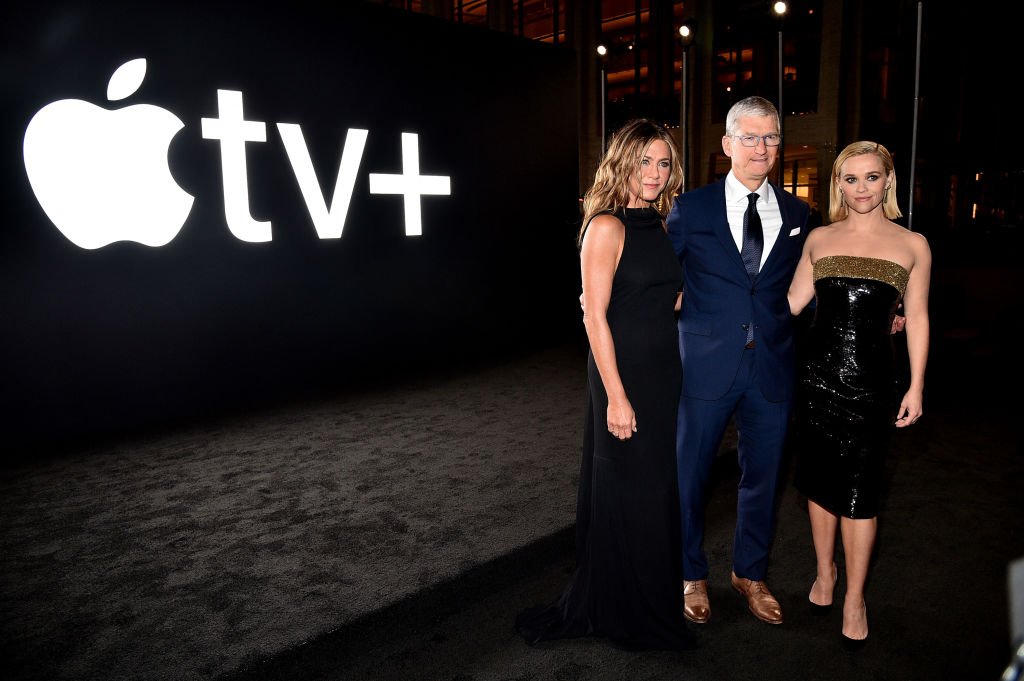
The streaming industry once considered itself the disruptive challenger of archaic entertainment business practices. But now that the industry has matured, the one-time rebel is aging into fiscal responsibility. The latest example is Apple TV+, which is turning to a new performance-based compensation model, according to a report from The Ankler. Unsurprisingly, Apple TV++’s model sounds an awful lot like the way Hollywood used to do business, with a few modernizations.
Apple Studios will now use a points and ranking system to grade new seasons on three key criteria: subscriber acquisition, engagement and cost efficiency. If, say, Ted Lasso is the first title viewed for more than 30 seconds in the first week of sign-up, it contributes to acquisition. Engagement is determined by total minutes viewed divided by the season runtime, which has become the industry standard for “views.” And cost efficiency is determined by budget divided by engagement. Combined, these three metrics will be used to grade performance over a calendar year, with subscriber acquisition being prioritized in ties, according to The Ankler.
Essentially, Apple TV+ will now reward talent for success. This is a stark departure from the streaming era’s “cost-plus” model popularized by Netflix in the 2010s, which incentivizes streamers to often pay a large amount upon the purchase of a show in exchange for buying out a talent’s backend. In other words, the floor of talent compensation was raised, but the ceiling was lowered. As a result, breakout hits wouldn’t pull in Friends-level payouts for producers and actors, but misses wouldn’t leave them holding the bag. This new transition reflects not only Apple’s growing financial pragmatism, but a broader industry recalibration.
Apple’s services business, which includes Apple TV+, Apple Music, Apple Arcade, Apple Fitness+ and iCloud+, brought in nearly $100 billion in sales last year. Apple TV+ remains a small piece (Apple Music and iCloud+ drive the bulk of services revenue), but “You want this to add to the overall brand experience, but without also crossing a massive gap in resources and investments,” Alejandro Rojas, vice president of applied analytics with Parrot Analytics, said recently in a research report.
The challenge: Apple TV+ reportedly loses more than $1 billion annually while needing to justify its place in Apple’s larger services strategy. Misguided observers like to clapback that money isn’t an issue for Apple, which enjoys a market cap of more than $3 trillion, and that Apple TV+ doesn’t need to make money. But no company, no matter how wealthy and successful, willingly burns billions of dollars every year without ever generating a return. Good companies generate value. That’s the driving force behind this compensation change—cost management and strategic alignment. No more effing around.
Return to traditional Hollywood economics
Talent and studios traditionally aligned their interests to share both risk and rewards. Believe it or not, but dumping a truckload of money into certain creative’s bank accounts sight unseen rarely produces the best possible results.
Apple’s three-metric system—subscriber acquisition, engagement and cost-efficiency—creates aligned incentives. Everyone involved is motivated to deliver the best possible product, especially on top of the streaming bonus system previously negotiated by the Writers Guild Association. This model appeals to certain talent segments who prefer upside participation versus guaranteed minimums. It’s the difference between wealth and riches for some.
“The better performance and more seasons, the higher the per point pay — maxing out at $350,000 per point for its top three shows in season 5 or beyond,” per The Ankler. “With a 35-point cap, that’s north of $12 million.”
Such a switch-up could help strengthen Apple’s competitive position in talent acquisition, especially when bidding wars break out for hot new packages. A key question will be if Apple moves slightly away from its insistence on brand-safe premium programming and more toward middle-of-the-road broad appeal content. The streamer has delivered commercially successful elevated broadcast-esque fare, like Ted Lasso and Hijack, but has proven reluctant to fully embrace sitcoms and procedurals that drive engagement.
“Apple TV+ has great content, but great content without a real distribution model is like having the best wine sealed in a cellar,” Jarie Bolander, General Manager and Executive Partner at marketing agency Decision Counsel, told Observer. “While competitors like Netflix and Prime are scaling with flexible pricing, ad-supported tiers and global bundling deals, Apple is still treating streaming like a prestige product—premium-only, locked behind the Apple ecosystem. That may align with their brand, but it doesn’t align with how people consume media today.”
Industry-wide implications
Netflix reportedly considered similar backend deals last year, though no concrete changes have emerged publicly. The industry typically follows Netflix’s lead, though Apple’s proactive move suggests streaming executives are finally doing what works best for their own bottom lines. Mimicking the competition just isn’t a sustainable long-term strategy for success.
More importantly, this is yet another instance in which streaming’s once disruptive practices are increasingly being discarded for more traditional approaches. Streaming once promised ad-free prestige programming delivered through binge releases while avoiding professional sports and being completely siloed. Now nearly every major streamer offers weekly programming across the creative spectrum, pursues sports rights, promotes ad-supported tiers and is often bundled on or with other platforms and services. New waves of changes are surely on the horizon that will once again reinvent the streaming business.
The industry has matured from growth-at-all-costs to sustainable profitability. Apple desperately needs to grow its video subscription service, both as a business and as a cultural destination. Doing so across the board for every major streamer means increasingly borrowing traditional media practices. Apple TV+ is showing an ability to change strategies, which is a good first step.





